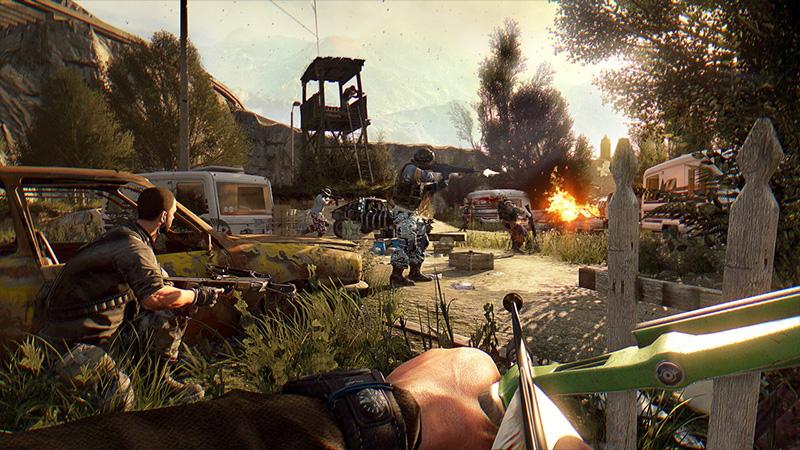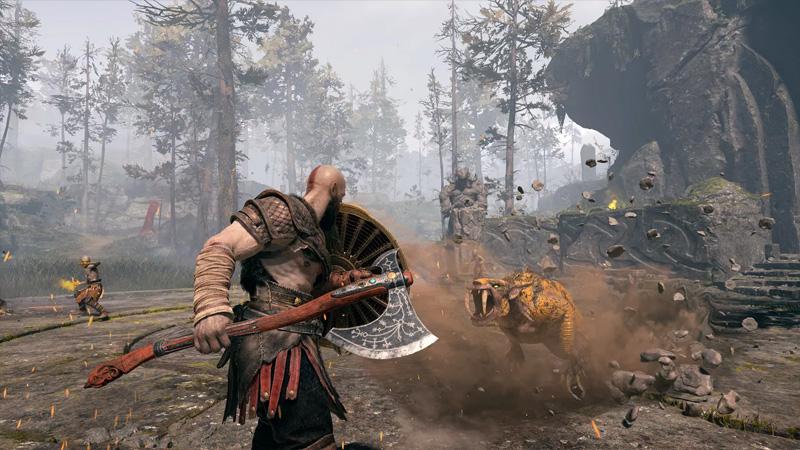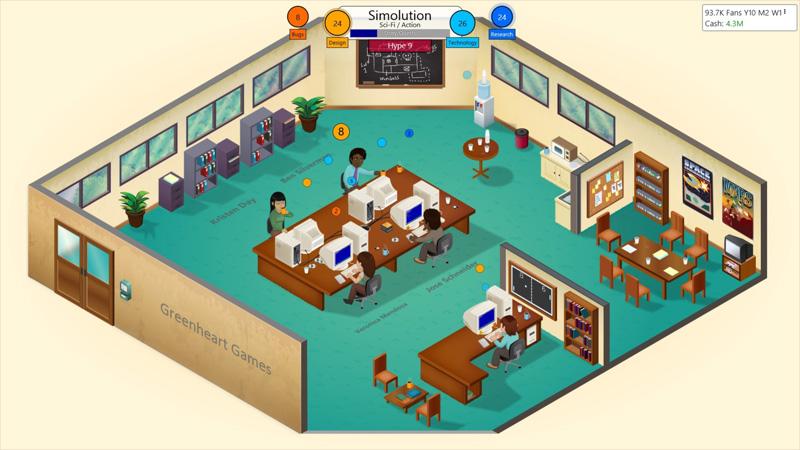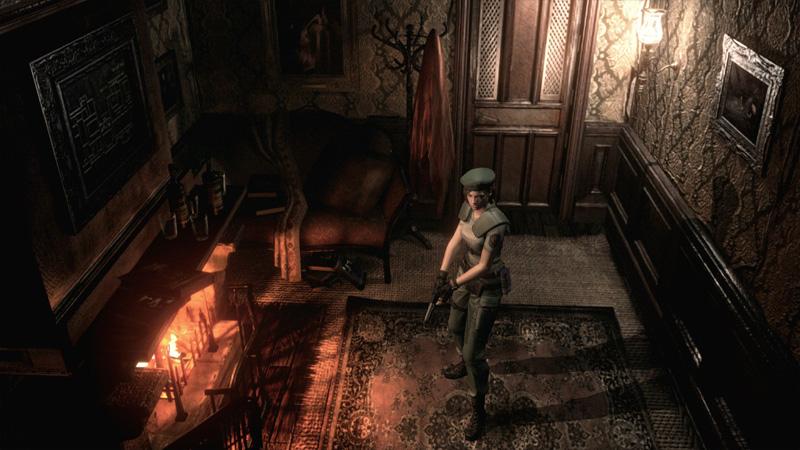Getting to Know the Different Perspectives of Video Game Cameras
Technological advances over the years have certainly accompanied the development of the video game industry. From the technical side, such as graphics that make the visuals of the game more realistic and pleasing to the eye, to the content of the game itself which continues to innovate, is more complex, and presents stories that can even compete with the film medium.
We are now officially on the platform Tiktok! Follow our Tiktok account at @gamebrott.com to find various information and our other interesting video content.
One aspect that may be overlooked when talking about video games is the perspective of the camera used in it. At first, the perspective used by many video games tended to be third-person, but increasingly here, various other camera perspectives were born to accommodate different types of games.
Therefore, it seems interesting if we try to briefly know the various camera perspectives used in many games today. Maybe it will be useful for those of you who one day want to develop video games.
1. First person

You could say the camera perspective is quite popularly used in accommodating shooter games. As the name implies, this perspective positions the player in the first person, in this case the main character of the game and sees everything directly from his point of view. The characteristics of this one perspective usually show the part of the character’s hand when holding a weapon or other object.
Some examples of games with a first-person camera perspective; Call of Duty, CS:GO, Outlast, Dying Light.
2. Third person

Literally, the third-person camera perspective is arguably the most common because it only positions the player as a third person or just someone playing the video game. The characteristics of this one perspective tend to show the whole body of the character being played. Various other perspectives on this list are usually variants or direct derivatives of third-persons with more specific characteristics.
Some examples of games with a third-person camera perspective; The Witcher, Assassin’s Creed, Dark Souls, Grand Theft Auto V.
3. Over the Shoulder

A more specific third-person variant. Where as the name implies, this perspective brings the camera closer or the view parallel to the head of the character being played, as if making the player stand directly behind the side of the character’s shoulder. The characteristics of the over the shoulder perspective are usually the characters played are not in the middle of the camera, but tend to be on the right or left following the rule of one third of the camera.
Some examples of games with an over the shoulder camera perspective; Resident Evil 4, Gears 5, The Division, God of War (2018).
4. Side View

Another variation of third-person that can be considered a separate genre, aka side-scroller. The camera seems to be placed far from the game and only shows the side of the character and his environment. The characteristics of the game with a side view perspective lies in the mechanism of the character’s movement which is limited in 2D; horizontal and vertical only. But now quite a lot of games are still able to present a 3D impression in it.
Some examples of games with side view camera perspective; Bloodstainer: Ritual of the Night, Elsword, Super Mario Bros., Hollow Knight.
5. Top-down

Often referred to as bird’s-eye view, this perspective positions players like birds who see the game’s characters and their environment from the sky. As the name implies, the top-down perspective itself was initially like looking up and down in a straight line or just 2D, but now there are also top-down perspective variants that give a 3D impression.
Some examples of games with a top-down camera perspective; Hotline Miami, Pinball, Grand Theft Auto 1 & 2.
6. 3/4 View

Further development from a top-down perspective. 3/4 view places the camera angle at a lower angle to give it a 3D feel even if the object itself is a 2D asset. Characteristics of this camera perspective can usually be seen from the buildings and objects in the game shown the front side and the top side. Popularly applied to classic JRPG games.
Some examples of games with 3/4 view camera perspective; Chrono Trigger, Stardew Valley, Final Fantasy I – VI, Suikoden I & II
7. Isometric Projection

Tend to be known as isometric only, this one perspective is arguably a more advanced top-down variation by utilizing the three-dimensional (XYZ) axis principle. It’s easy to understand when the camera angle is not only tilted down, but (the angle) is also moved sideways about 45 degrees to give a more realistic 3D impression. Slightly similar to 3/4 view, but now you can see the sides of buildings or objects in the game. Not only 2D games, this perspective is used by 3D games to create the impression of depth of an object.
Some examples of games with isometric projection camera perspective; Game Dev Tycoon, Sim City 2000, Theme Hospital, Monument Valley.
8. Fixed Camera

As the name implies, a third-person perspective variant where the camera will stay (fixed) in one place and follow the character in a minimalist way, as if giving the impression that the player is observing the character in the game. The fixed camera perspective was originally used to avoid the camera screw problem that often occurs in old third-person games, especially in games with complex level designs. But now fixed camera has become a video game subgenre that is quite niche.
Some examples of games with a fixed camera perspective; Devil May Cry, Resident Evil 1 & 2, Final Fantasy X & X-2, Dino Crisis.
9. Free Camera

The opposite of fixed cameras, of course, where free cameras give players the freedom to move the camera at will and not be fixated on a character or an object. This perspective is usually present in genres or games with RTS elements, so that players can see the overall situation and develop the right strategy. However, the free camera features themselves are usually limited in horizontal and vertical movements, viewing angles, and zoom in and zoom out.
Some examples of games with free camera perspective; Dota, StarCraft, Total War, Cities Skylines.
10. Second-person
You may have wondered, why video games only present the first-person and third-person genres, are there games with a second-person perspective? The answer is of course there is, but not as the main camera of a video game, but usually inserted in the game in a certain segmentation. The second-person perspective is simply the point of view of the NPCs in the game, such as the enemies you fight or the partners who accompany your adventures in the game, where the perspective of the NPCs certainly cannot be felt directly.
For example, in the San Francisco game Driver, there is a mission where you play a cop who has the abnormal power to possess other drivers. In this series of missions, you will possess a driver from a criminal organization that your character is investigating. And as you near the end of the mission, you who are possessing the driver find your main character’s car and you are told to follow it. Unexpectedly, it turns out that you are still driving your character’s main car, but from the perspective of the driver you are possessing.
Apart from all that, now many games combine various camera perspectives in various game segments. One of them is like NieR: Automata, which although the main menu is third-person, in certain areas it changes to top-down, 3/4 view and side view.
Of course, there are many other camera perspectives that I didn’t mention in this article, because most of them are more specific derivatives of the perspectives I listed above, or indeed become a special feature of the game itself.
So, from the various camera perspectives that I have stated above, which one is your favourite? It is undeniable that different camera perspectives can provide different gaming experiences as well. I myself really like the isometric camera perspective, especially in today’s games because it gives the impression of a deep and more // aesthetic // environment. Share your opinion in the comments column yes!
Also read interesting information or other cool articles from Andy Julianto. For further information and other inquiries, you can contact us via [email protected]
Post a Comment for "Getting to Know the Different Perspectives of Video Game Cameras"